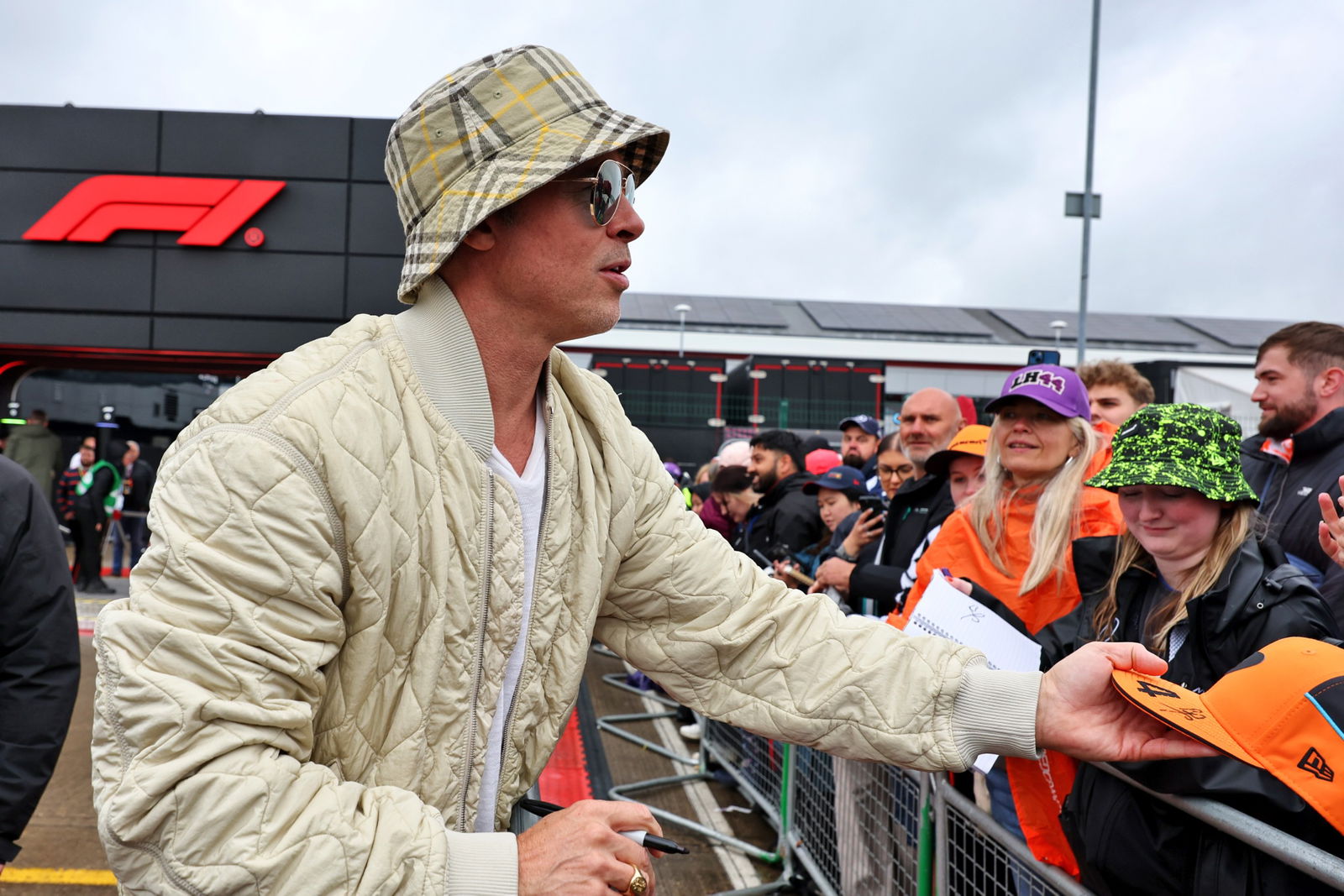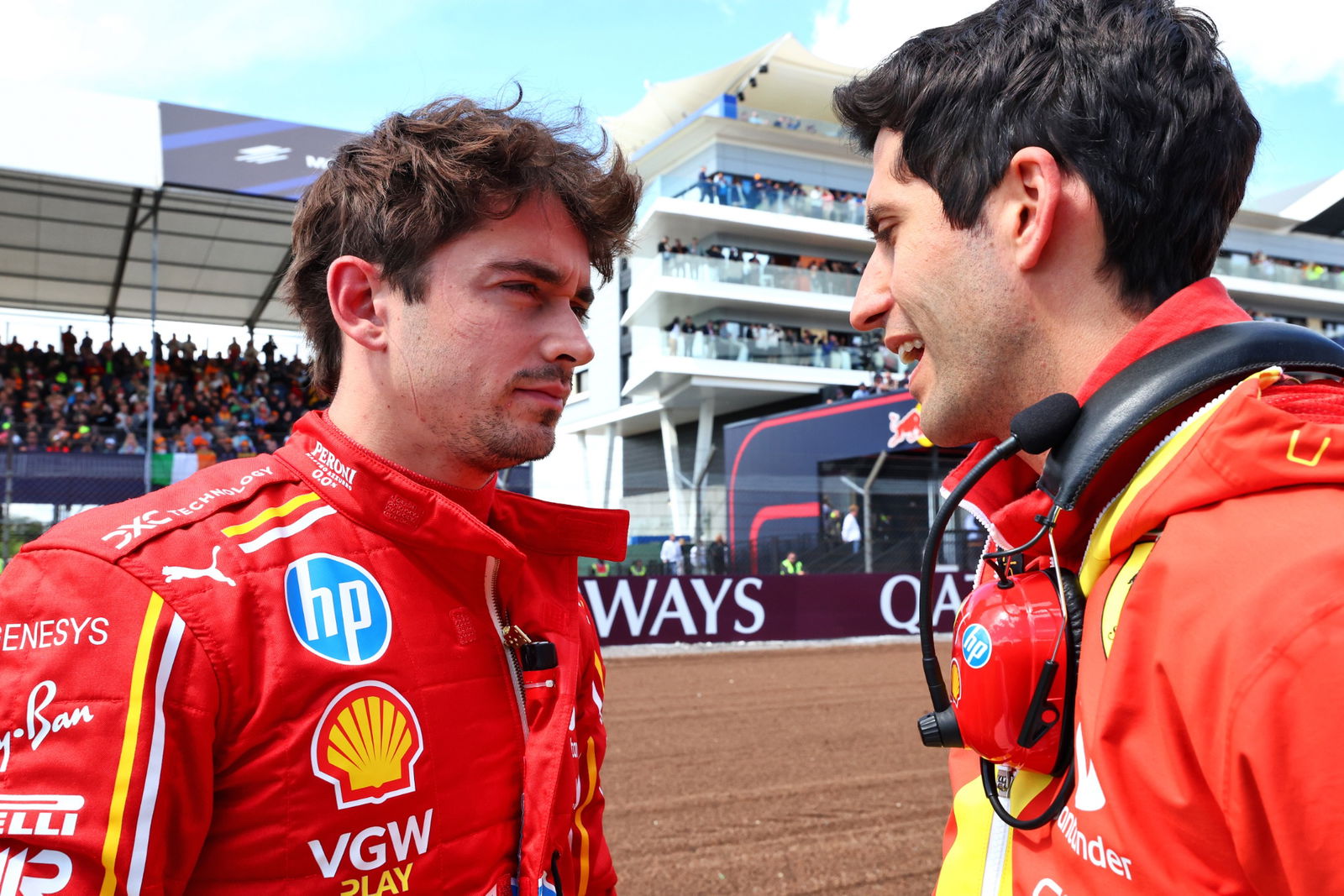McLaren are not ready for F1 title fight as they throw away British GP 1-2
The 2024 F1 British Grand Prix was another missed opportunity for McLaren at Silverstone as they converted a 1-2 on track to a 3-4 finish.

McLaren’s inability to capitalise on having a car capable of regular F1 race victories seems to be a common trend in 2024. While the blame has often been laid at Lando Norris for a number of missed opportunities or mistakes at crucial times, the two McLaren drivers were mostly blameless at the British Grand Prix.
The MCL38 didn’t have the outright pace of the Mercedes W15 in dry conditions as George Russell and Lewis Hamilton controlled the race during the early stages, building a three-second gap over Max Verstappen. The McLaren came alive as the stint went on - as they often do in 2024 - combined with track conditions worsening as the rain started to fall.
On Lap 15, Norris made his move past Verstappen, who showed no sign of repeating his Austria aggression when defending. Just two laps later, Oscar Piastri showed McLaren were growing into the ascendency as he breezed past Verstappen into Stowe.
At this point of the race, teams were contemplating a switch to the intermediates as lap times plummeted. The worsening conditions changed the complexion of the grand prix at the front as on Lap 18, Hamilton took the lead from Russell.
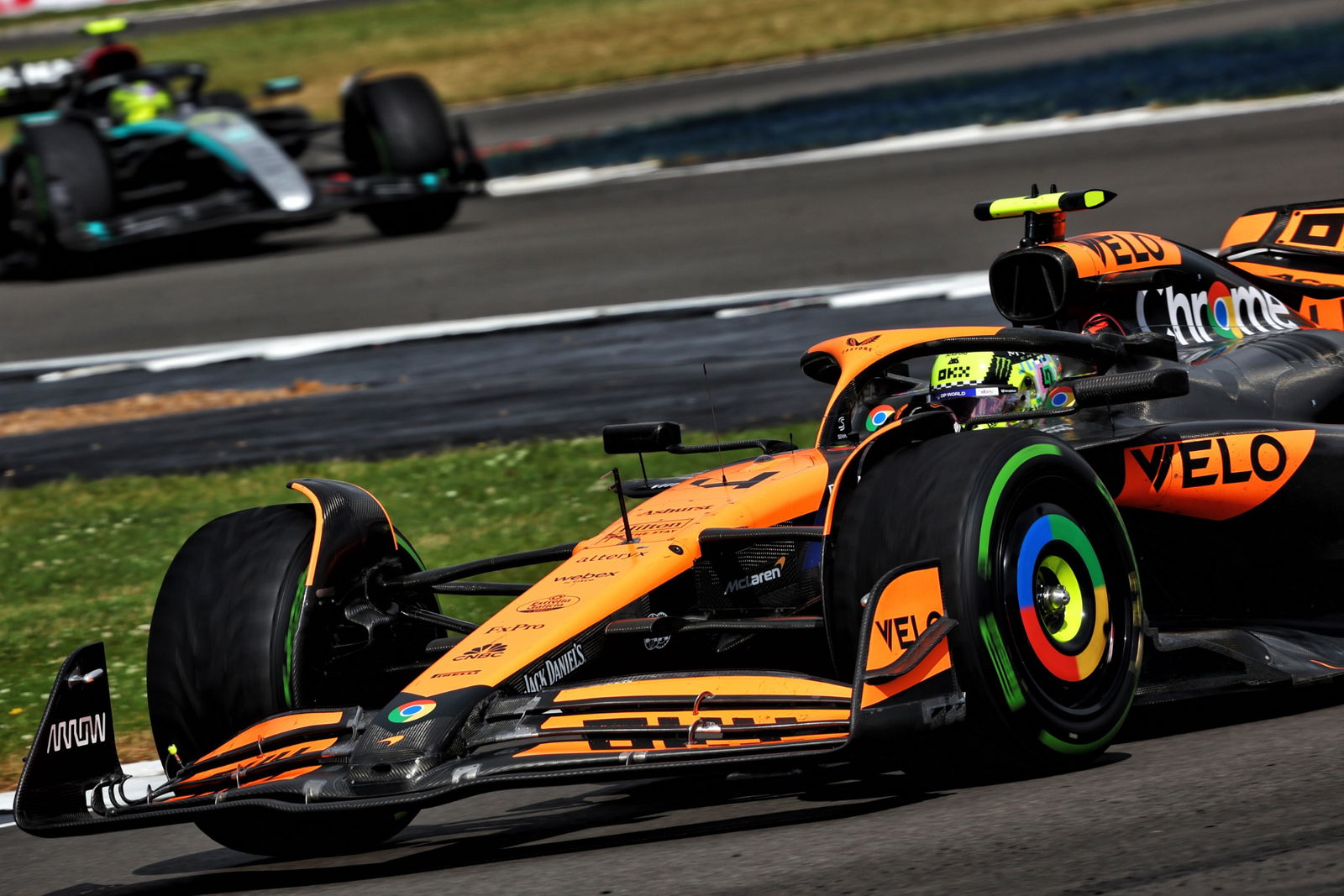
Just moments later, both Mercedes drivers went off at Turn 1, while Norris stayed on the track as he dispatched Russell through the first sequence of corners. It soon became apparent that the McLaren was excelling in these changeable conditions as Norris took the lead a lap later at Hamilton’s expense.
Piastri followed him through to make it a McLaren 1-2 by Lap 20 as they continued to circulate on dry tyres on a slippery track. But with the rain getting heavier, McLaren had a decision to make.
The first McLaren mistake
With Piastri within a second of Norris at the front, McLaren had a key decision to make. Either force Piastri to queue behind his teammate and lose a few seconds behind Norris - or stay out an additional lap on dry tyres in effectively intermediate conditions.
Verstappen called it perfectly as he stopped at the end of Lap 26, with Norris and Hamilton following him a lap later (Mercedes opted to bring Russell in on the same lap and queued behind Hamilton). Mistakenly, Piastri stayed out.
By the time Piastri stopped at the end of Lap 28, he had lost nearly an entire pit stop (20 seconds). This dropped Piastri from second - no doubt he would have lost out to Hamilton and possibly Verstappen had he double-stacked - it would have still given McLaren the chance to fight for a 1-2.
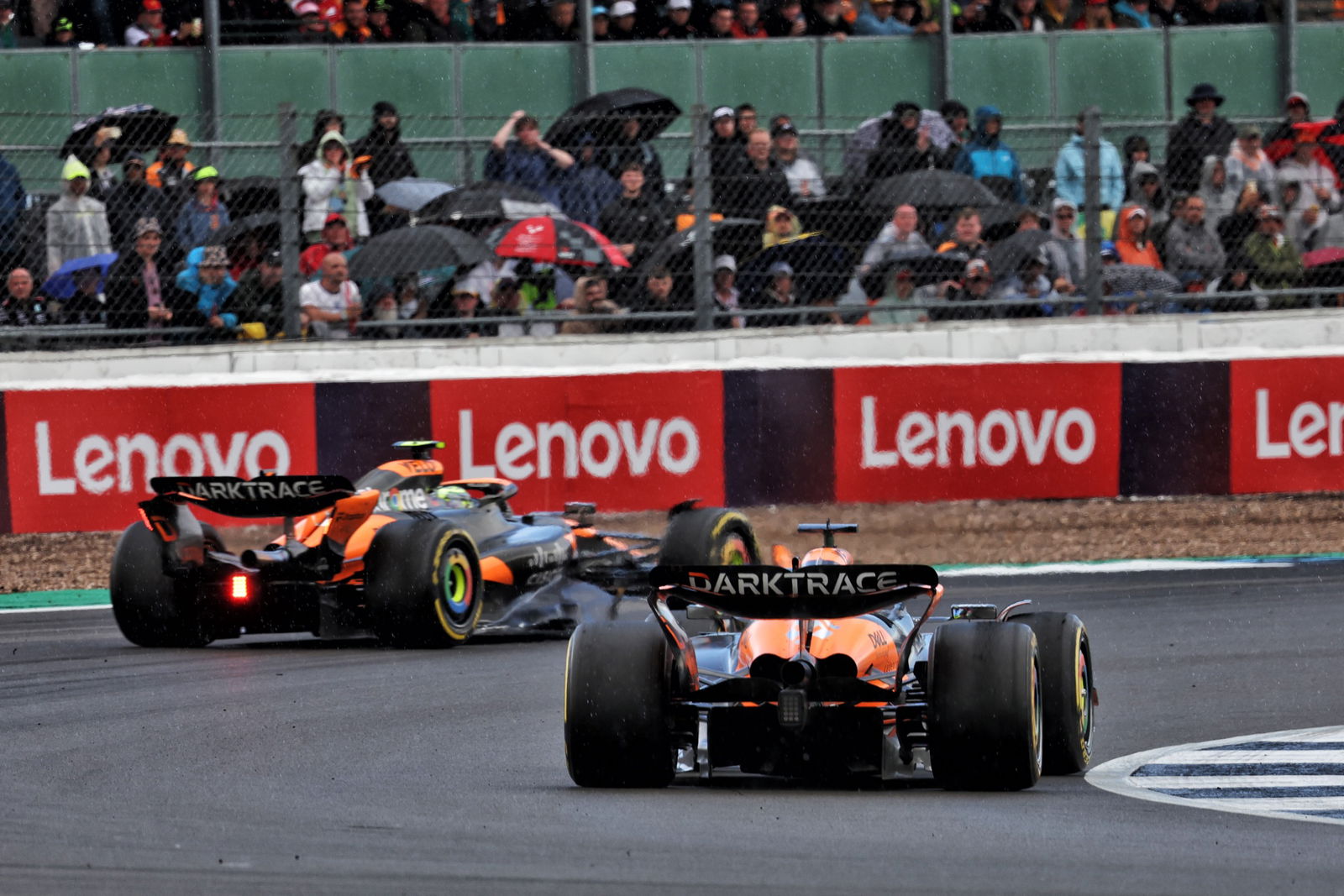
McLaren boss Andrea Stella vowed to learn from it, conceding the team made a clear mistake.
“Not only should he [Piastri] have pushed but we should have pushed harder for the double stack because by delaying Oscar's stop by one lap we lost much more time than the time we would have lost in a double stack pit stop,” he said after the race at Silverstone, where Crash.net are present in the paddock.
“So in hindsight that was the right thing to do, stop both cars at the same time and we take the learning from this experience and we will do better next time.”
The second McLaren mistake
With the rain stopping, attention soon turned to when to switch to dry tyres. Chatter over team radio suggested McLaren were weighing up which compound they would fit when the time was right.
For Piastri, it was crystal clear.
“Competitive cars do not have medium. Currently we think it is the right tyre, 15 laps to go,” Piastri was told.
He abruptly replied: “Yes, yes. It’s the best”.
McLaren had an advantage over their rivals because they had a spare set of new medium tyres - the favoured race compound - while Mercedes and Red Bull had to decide between the soft and hard. Hamilton was Norris’ closest threat and stopped one lap before him at the end of Lap 38 - Verstappen did the same.
Given Norris had the lead of the race - by a couple of seconds - you can’t be critical of the timing of McLaren’s stop to slicks, but the choice of compound baffled many, including Red Bull boss Christian Horner. With Hamilton on the softs, McLaren decided to follow suit.
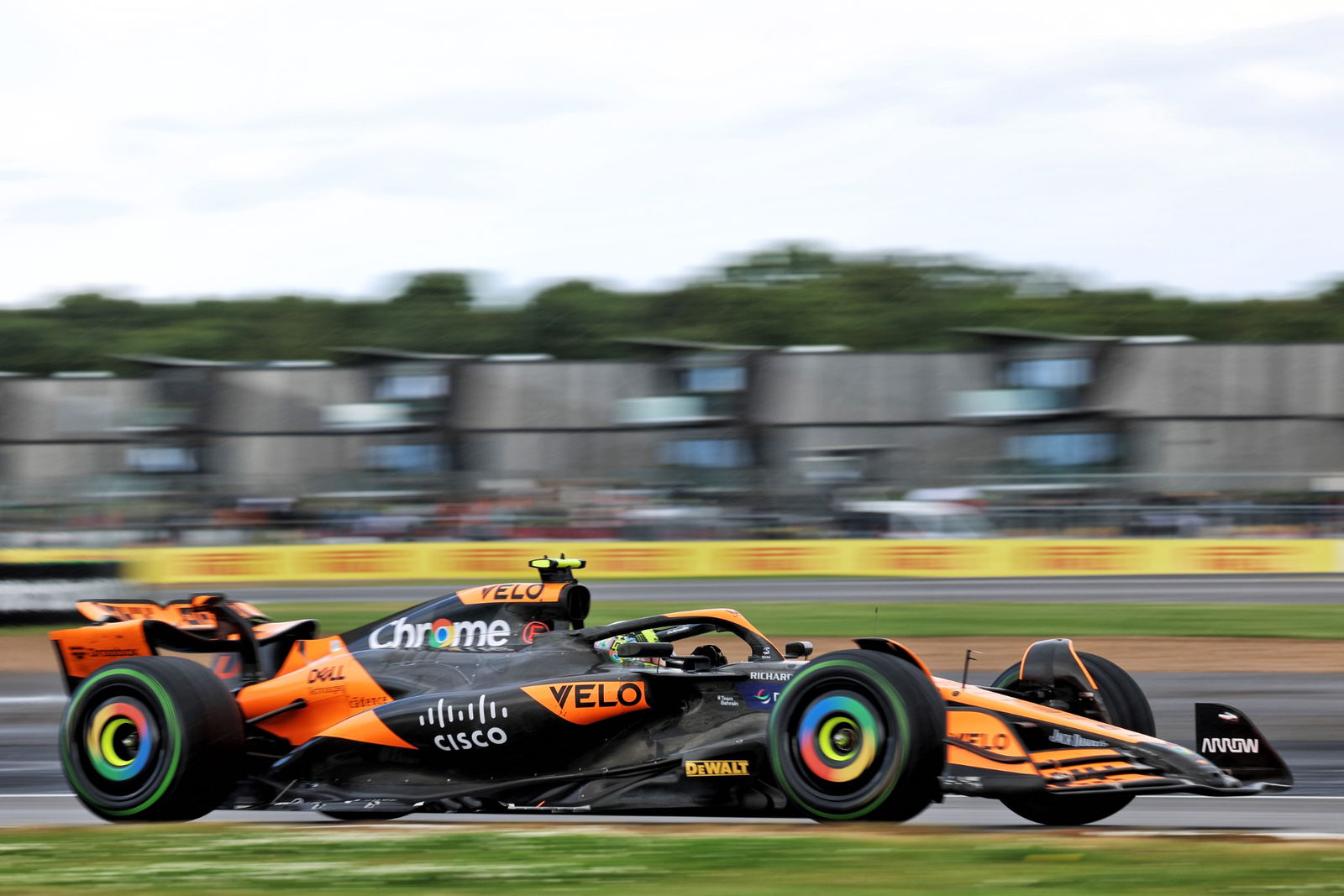
This left Hamilton and Norris on the softs; Verstappen on the hard; Piastri on the mediums. It quickly became apparent that the harder compounds were more favourable as Verstappen and Piastri exchanged fastest laps.
By Lap 48, Verstappen dispatched Norris, who was struggling on his softs, to move into second. Hamilton, while slower than Verstappen and Piastri, demonstrated why he’s still one of the very best at looking after his tyres.
Piastri’s electric pace on the mediums was consistently quicker than Hamilton’s up front - and level with Verstappen’s. On average, Norris was 0.7s slower than Piastri across the final stint of the race, thus it’s highly likely the former would have beaten Hamilton to the race win at Silverstone had he fitted the mediums at his final stop.
Was Norris to blame?
Indecision over team radio and McLaren’s failure to directly inform Norris of which compound was better ultimately was their undoing.
Norris said as Hamilton pitted: “We need to box, the soft is better now... any slick tyre.”
His race engineer replied: “We can choose a medium to counter people like Verstappen (he is on hards) or we just a soft to counter people like Hamilton.”
Norris added: “I think Hamilton, or you think medium? I don't mind.”
His engineer said: “We are going softs.”
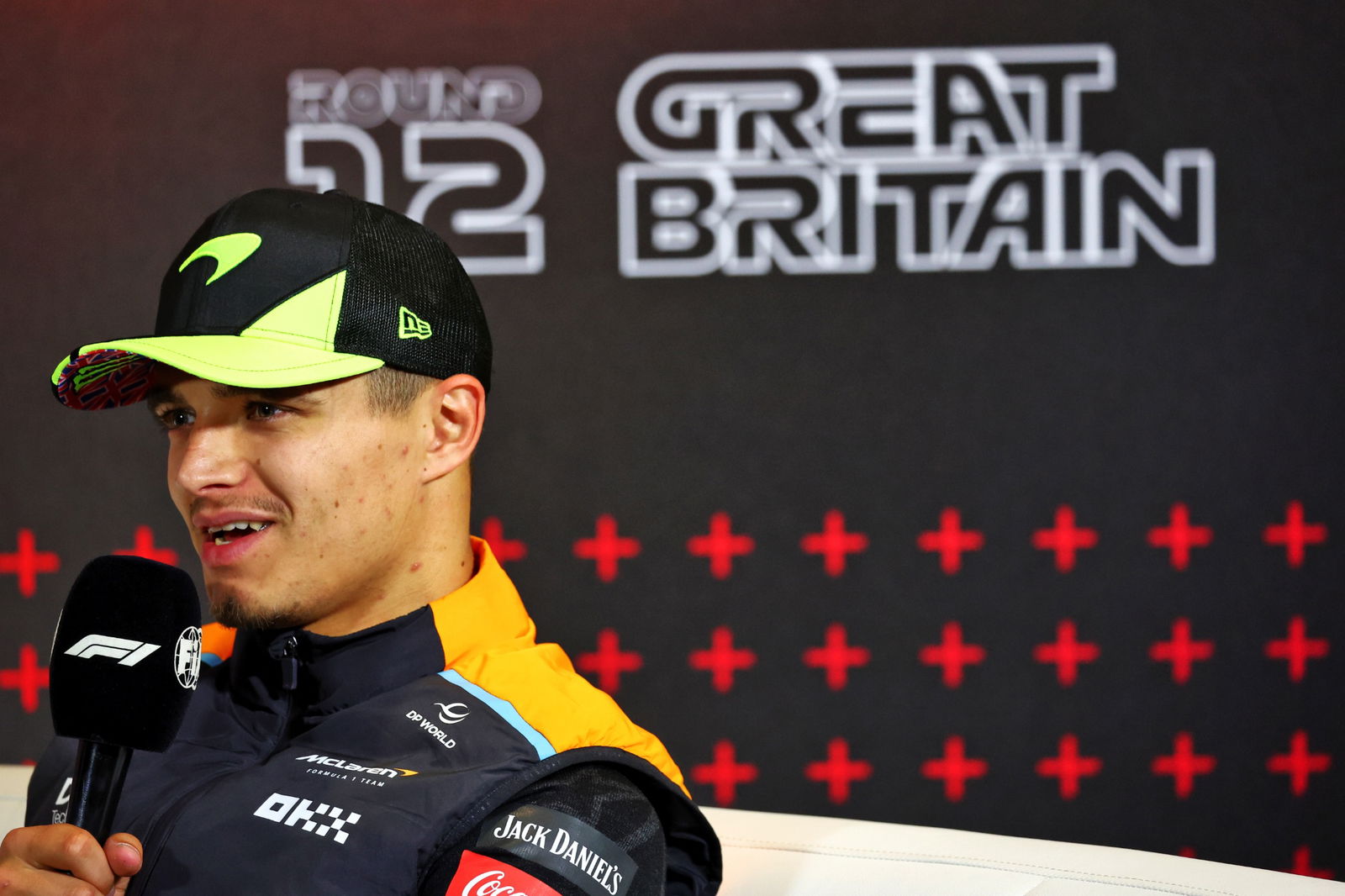
In this situation, McLaren should have taken the initiative and put Norris on the medium as they knew it was the favourable race tyre and the soft simply didn’t work on the MCL38. After the race, Stella admitted that their decision to go on the soft was “influenced” by Hamilton’s.
“Definitely the fact that Lewis went on soft is one of the disturbing factors towards the fact that we actually were going on medium, if it makes sense,” he explained. “I think there the bet was will the soft make it to the end and how much gap will the soft gain.
“At the start in transition compared to going there on medium because the medium will be faster at the end but how much time do you lose in the first two, three laps on a medium and is there any risk that you put a wheel on a wet patch and you lose the car so I think in this respect we I think we were too influenced by the fact that Lewis went on soft, I think we should have been more like medium is the right tyre.”
McLaren will be left to rue another missed opportunity, particularly when Verstappen looked like he could have feasibly finished fifth this weekend. If they pre-empted the Safety Car in Canada, Norris would have possibly won the race.
Similarly, in Spain and Austria, crucial moments against Verstappen in the wheel-to-wheel cost Norris further victories. While McLaren are escaping Ferrari-like criticism (so far at least) there’s a lot of work to be done on the pit wall to convert their race-winning pace into regular grand prix victories.
